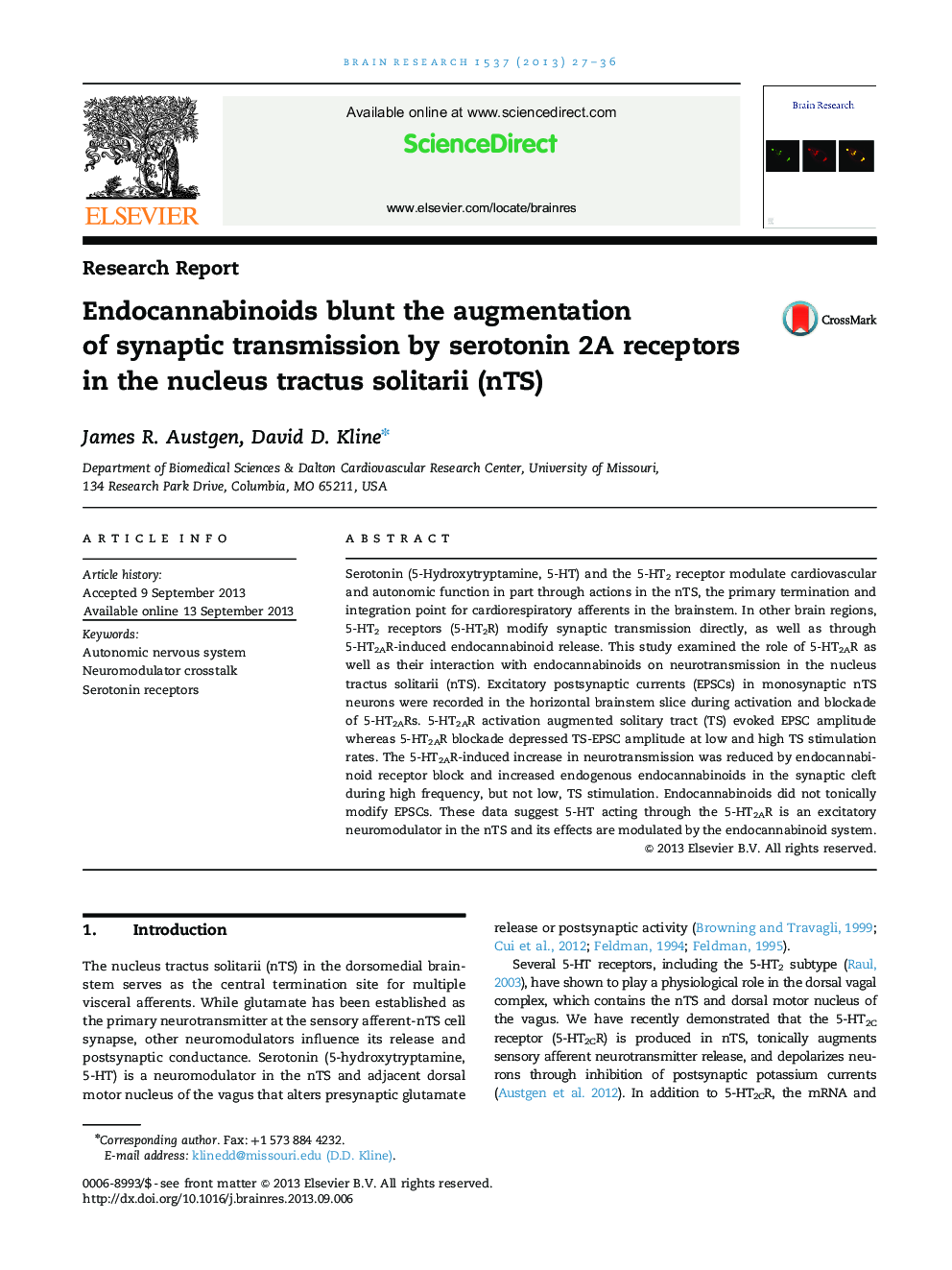| کد مقاله | کد نشریه | سال انتشار | مقاله انگلیسی | نسخه تمام متن |
|---|---|---|---|---|
| 6263518 | 1613902 | 2013 | 10 صفحه PDF | دانلود رایگان |

- Activation of nTS 5-HT2AR's augment the amplitude of afferent (TS)-driven EPSCs.
- Block of 5-HT2ARs reduced TS-EPSC amplitude, demonstrating tonic activation.
- Endocannabinoids modulate the 5-HT2AR-induced effects of TS-EPSCs.
Serotonin (5-Hydroxytryptamine, 5-HT) and the 5-HT2 receptor modulate cardiovascular and autonomic function in part through actions in the nTS, the primary termination and integration point for cardiorespiratory afferents in the brainstem. In other brain regions, 5-HT2 receptors (5-HT2R) modify synaptic transmission directly, as well as through 5-HT2AR-induced endocannabinoid release. This study examined the role of 5-HT2AR as well as their interaction with endocannabinoids on neurotransmission in the nucleus tractus solitarii (nTS). Excitatory postsynaptic currents (EPSCs) in monosynaptic nTS neurons were recorded in the horizontal brainstem slice during activation and blockade of 5-HT2ARs. 5-HT2AR activation augmented solitary tract (TS) evoked EPSC amplitude whereas 5-HT2AR blockade depressed TS-EPSC amplitude at low and high TS stimulation rates. The 5-HT2AR-induced increase in neurotransmission was reduced by endocannabinoid receptor block and increased endogenous endocannabinoids in the synaptic cleft during high frequency, but not low, TS stimulation. Endocannabinoids did not tonically modify EPSCs. These data suggest 5-HT acting through the 5-HT2AR is an excitatory neuromodulator in the nTS and its effects are modulated by the endocannabinoid system.
Journal: Brain Research - Volume 1537, 6 November 2013, Pages 27-36